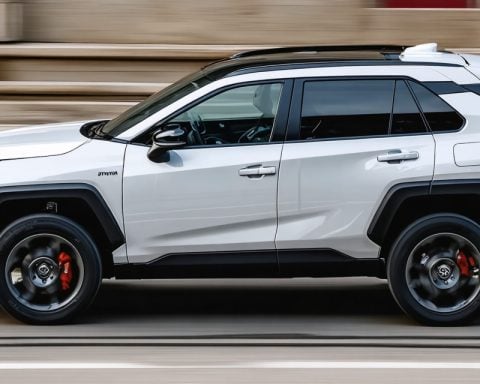As automotive prices rise, consumers are bracing for impact. The price hikes have begun, and here’s why it’s important.
Recent events have seen Tesla increasing the prices of its electric vehicles in Canada, with adjustments reaching as high as $6,200 CAD for the popular Model 3 sedan. The changes affect nearly all models except for the newly launched Cybertruck. This surge might largely be a reaction to looming import tariffs proposed by the U.S. government under President Trump. As he aims to impose tariffs of up to 25% on imports from Canada and Mexico starting February 1, the Canadian response could create an economic ripple effect on both sides of the border.
This potential tariff war presents a formidable challenge, particularly for American consumers, who could find themselves paying significantly more for vehicles as manufacturers pass increased costs down the line. Models such as the Toyota Tacoma and Honda CR-V, which are manufactured outside the U.S., could see noticeable price hikes.
Adding to the drama, the Vietnamese electric vehicle maker VinFast is facing serious financial struggles, reporting losses of nearly $2 billion in recent quarters. Amidst mounting pressure from shareholders, divestment in VinFast could diminish its potential for future growth and recovery.
In a further twist, Stellantis has issued a recall for 63,000 Jeep Cherokee SUVs due to serious power loss issues. This recall highlights the ongoing safety concerns in the industry, prompting necessary scrutiny from manufacturers and consumers alike.
Automotive Price Hikes: Broader Implications for Society and the Economy
As automotive prices rise, the ramifications extend far beyond individual consumer wallets. This shift is poised to alter purchasing behaviors, which could have significant impacts on society, culture, and the global economy. When vehicle costs rise, many consumers may resort to keeping older cars longer or turning to alternative forms of transportation, which creates a ripple effect within economies at local and national levels. The culture of car ownership—particularly in car-centric societies—may come under new scrutiny as people reconsider their transportation choices, potentially accelerating the trend toward more sustainable urban mobility solutions.
Moreover, these price increases raise concerns about inequitable access to transportation. As affordability wanes, low- and middle-income families may struggle more than ever to purchase reliable vehicles. This presents a potential cultural shift where personal vehicle ownership could evolve to become a luxury rather than a necessity, further deepening socioeconomic divides.
On the global stage, potential tariffs threaten to disrupt supply chains, impacting both manufacturers and consumers. This disruption could lead to inflationary pressures, further straining the economy. Additionally, environmental implications are noteworthy; higher prices for electric vehicles might deter consumers from making eco-friendly choices, thus slowing down the transition to greener technologies. Key stakeholders must navigate these complex challenges to sustain growth and ensure equitable access to transportation in the future.
Rising Automotive Prices: What You Need to Know About the Latest Trends and Innovations
As inflation impacts various sectors, the automotive industry is not immune. Recent price hikes across popular automotive brands have caught the attention of consumers, prompting an analysis of the factors driving these changes, as well as emerging trends, innovations, and market forecasts.
Factors Driving Price Increases
Several factors contribute to the rising automotive prices. One major influence is the ongoing global supply chain disruptions, which have affected the availability of essential components such as semiconductors. These shortages lead to increased production costs, which are often passed onto consumers in the form of higher vehicle prices.
Tariffs and Trade Policies
The potential introduction of tariffs on imports from Canada and Mexico by the U.S. government is another significant concern for consumers. If implemented, these tariffs could drive up the prices of vehicles manufactured in or imported from these countries, particularly affecting popular models and leading to higher costs for American consumers.
Key Trends and Innovations
Electric Vehicle Growth
With the rise in automotive prices, electric vehicles (EVs) are becoming increasingly popular due to their long-term cost-saving potential and environmental benefits. Manufacturers like Tesla are leading the charge, but competition is heating up with companies such as Rivian, Lucid Motors, and VinFast entering the market.
VinFast’s Financial Struggles
Despite the growing market for EVs, VinFast is currently facing financial difficulties, reporting losses of nearly $2 billion in recent quarters. Such struggles can impact investor confidence and the brand’s ability to innovate and expand in a competitive space. As consumers seek reliable electric options, the performance of emerging companies like VinFast will be closely monitored.
Pros and Cons of Current Market Trends
Pros
– Increased Investment in EV and Hybrid Technology: Automakers are pivoting towards developing more sustainable vehicles, which can reduce long-term operational costs.
– Enhanced Features: Rising prices often come with new technology and features, such as improved safety systems and infotainment functionalities, that provide added value to consumers.
Cons
– Affordability Issues: Higher vehicle prices can make car ownership less accessible for average consumers, potentially impacting sales.
– Risk of Economic Repercussions: Tariffs and trade restrictions may lead to retaliatory measures, further complicating the market landscape.
Market Insights and Predictions
Experts predict that the automotive market will continue to experience fluctuations in pricing due to geopolitical tensions and supply chain realities. As manufacturers adapt to these conditions, looking into options such as more local sourcing of parts or diversifying supply chains may provide some relief from rising costs.
Security Aspects
As cars become more connected and integrated with technology, issues related to cybersecurity have emerged. Manufacturers must ensure that vehicles are equipped with robust security features to protect against data breaches and hacking attempts.
Conclusion
With automotive prices on the rise, it’s crucial for consumers to stay informed about market trends and manufacturer innovations. The automotive landscape is evolving, and staying ahead of these changes can help consumers make smarter purchasing decisions. For further insights into the automotive market and to keep up with the latest developments, visit AutoTrader.
By understanding the factors that influence automotive prices and embracing the ongoing innovations in electric vehicle technology, consumers can navigate these changes more effectively and make informed choices in a rapidly changing market.













